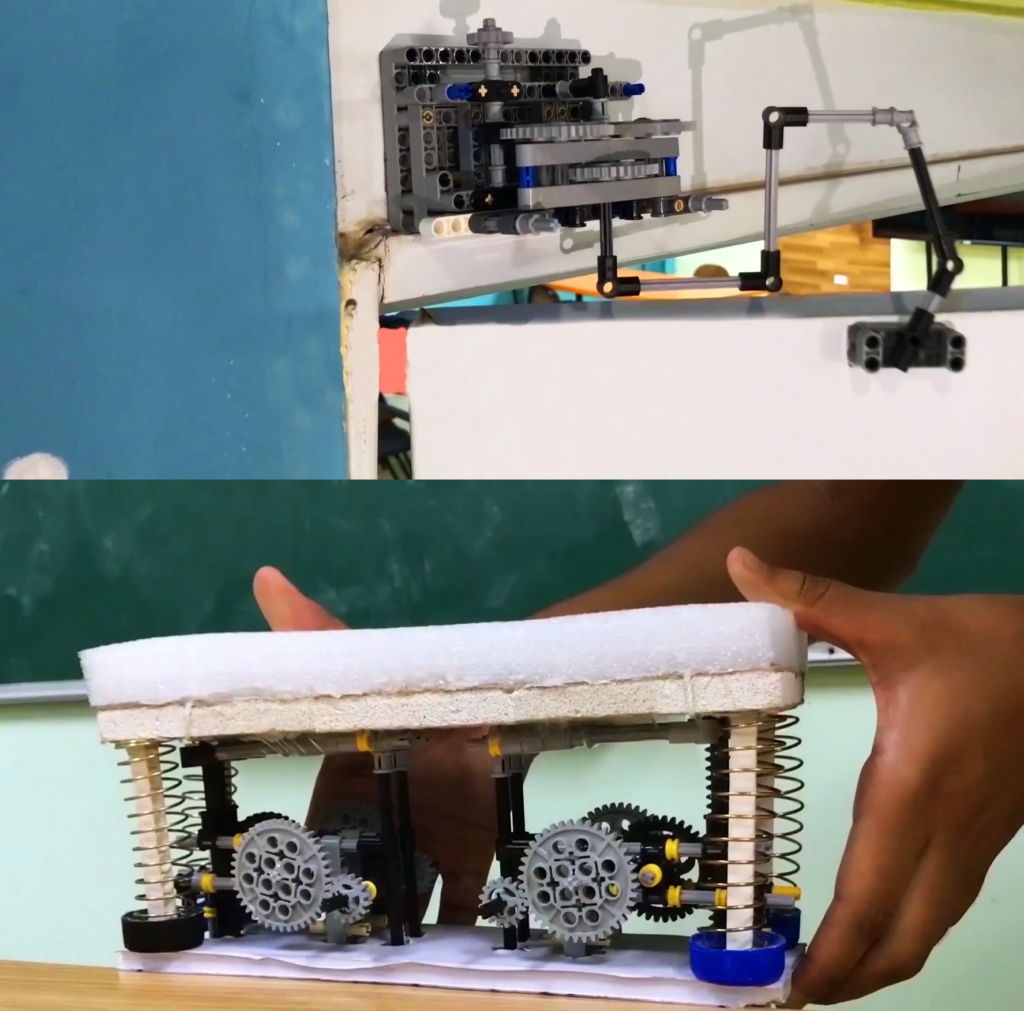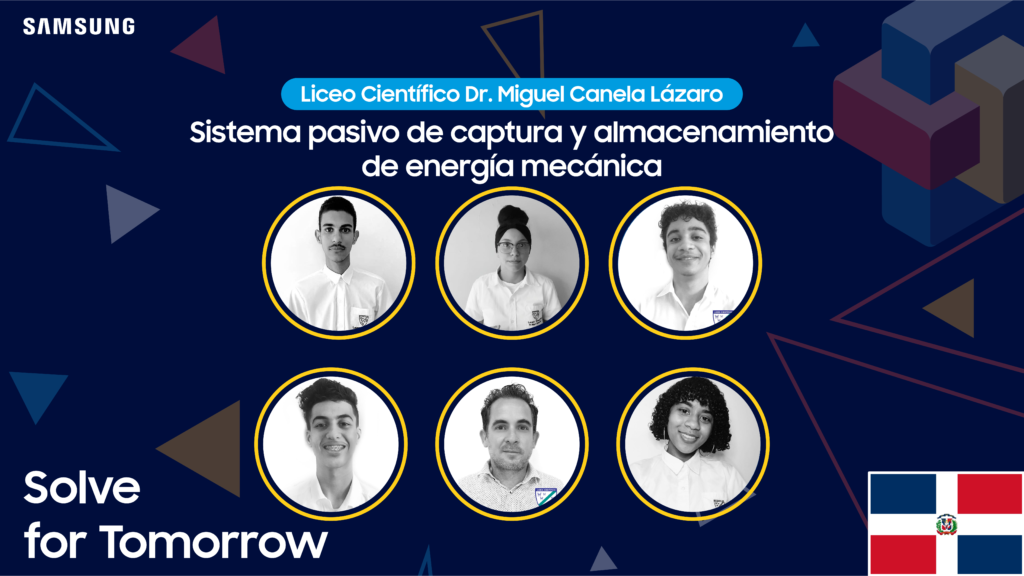To open and to close doors. A commonplace act that happens numerous times a day, especially in large businesses and institutions. It was noticing this daily phenomenon that four students and teacher Lázaro Pérez Acosta from Liceo Científico Dr. Miguel Canela Lázaro, located in the Hermanas Mirabal province – the Dominican Republic, decided to develop a device capable of capturing the mechanical energy of this daily movement, transforming it into electricity.
The students developed the project as an extracurricular activity, seeking solutions for energy generation that favor the environment, and inviting the teacher to support them. “This generation has a real concern for the future of the planet and this group wanted to contribute to the scientific debate on the subject, based on their investigations,” argues Lázaro. “Even in a school that works from projects, this group wanted to go further, dedicating itself to an initiative of theirs, with our support,” he adds.
As a starting point, the students started an extensive investigation, raising possibilities in the existing literature on storage and transformation of mechanical energy. Together, they concluded that it was possible to harness the mechanical energy generated by everyday movements. Based on the literature review, the group chose to develop two mechanisms: one that captures the energy generated by the rotating movement of opening and closing doors and a second capable of capturing the “up and down” movements and displacements when someone sits in a chair or changes its center of gravity, transforming, in both cases, mechanical energy into electrical energy. “Initially, we came to think of a third one, operated by water, but from the review itself, we understood that it was not the way to go at the time,” explains Lázaro.
Project Based Learning: combining multiple skills
After designing and developing the necessary calculations, the students started prototyping, using kits of building blocks and recyclable materials available at the school, and studying, in addition to robotics, issues such as electromagnetism, the use of servo motors, gear trains, and the use of software for plotting of 3D models for making parts in more sophisticated versions of the prototype. In addition to STEM knowledge, students also strengthened their writing skills, writing the project and proposals for partnerships, and artistic skills, for designing and setting the devices. To this end, the group had support not only from schoolteachers in highly interdisciplinary work, but also from the local university, both to discuss issues of object efficiency, with more rigorous tests and measurements that required more sophisticated equipment, and to better substantiate the proposal itself.


The pickup devices were tested with a direct connection to the mains and in charging modules (batteries) and proved to be quite efficient. “However, from the tests the group realized that the efficiency of the device of the doors, taking advantage of the opening angle of 45th to 60th was much superior, and chose to validate this as a solution”, argues the teacher. To work and test the idea at scale, the group established partnerships with local institutions and businesses, managing to conduct the tests in the anteroom of large establishments and a bank in the region. “This knowledge, of establishing partnerships, presenting the proposal, discussing it publicly was also developed throughout the process,” explains Lázaro.
All work was partially developed at a distance, with face-to-face meetings taking advantage of the days of the week when the class was at school, given the distance requirements imposed by the pandemic. “I told them that I was there as a kind of consultant, a mediator for their actions. The work agreed for the week was conducted by them and we discussed the results together and decided on the next steps,” explains Lázaro, praising the willingness and focus of its students. As the project was an extra activity, no formal evaluation methodology was used, but the teacher is certain that the students have grown a lot as scientists. “With this authorial activity and from all the experience of the contest, the group grew a lot! They designed the experience, made and applied questionnaires, created experiments, learned to follow and apply a methodology, in addition to developing a strong sense of responsibility with the collective and dedication to the proposal,” he explains.
For Lázaro, the school’s experience in managing projects and opportunities such as Samsung Solve for Tomorrow are concrete ways to improve education quality. “As a teacher, I am having the opportunity to experience what we believe and what is already proven to work in the educational process: a structure for them to develop with autonomy, protagonism, and curriculum knowledge applied to their realities,” he adds. With Samsung’s support, students still managed to structure a business model for the solution.




